Feast 11 April Name Guthlac Crowland | Siblings Pega | |
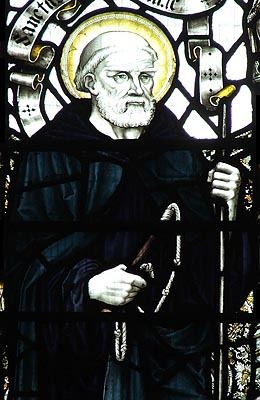 | ||
Venerated in Roman Catholic ChurchEastern Orthodox Church Died April 11, 714 AD, Crowland, United Kingdom | ||
Saint Guthlac of Crowland (Old English: Gūðlāc; Latin: Guthlacus; 674 – 3 April 715 AD) was a Christian saint from Lincolnshire in England. He is particularly venerated in the Fens of eastern England.
Contents
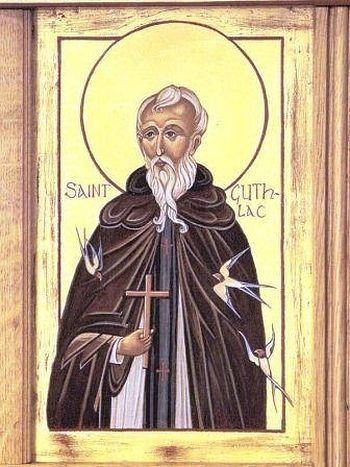
Life
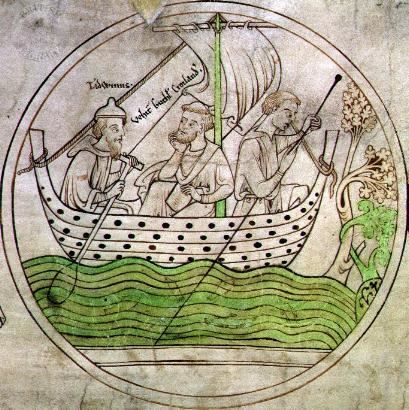
Guthlac was the son of Penwalh or Penwald, a noble of the English kingdom of Mercia, and his wife Tette. His sister is also venerated as Saint Pega. As a young man, he fought in the army of Æthelred of Mercia and subsequently became a monk at Repton Monastery in Derbyshire at age twenty-four, under the abbess (Repton was a double monastery). Two years later he sought to live the life of a hermit, and moved out to the island of Croyland, now called Crowland on St Bartholomew's Day, AD 699. His early biographer Felix asserts that Guthlac could understand the strimulentes loquelas ("sibilant speech") of the British-speaking demons who haunted him there, only because Guthlac had spent some time in exile among British-speaking people.
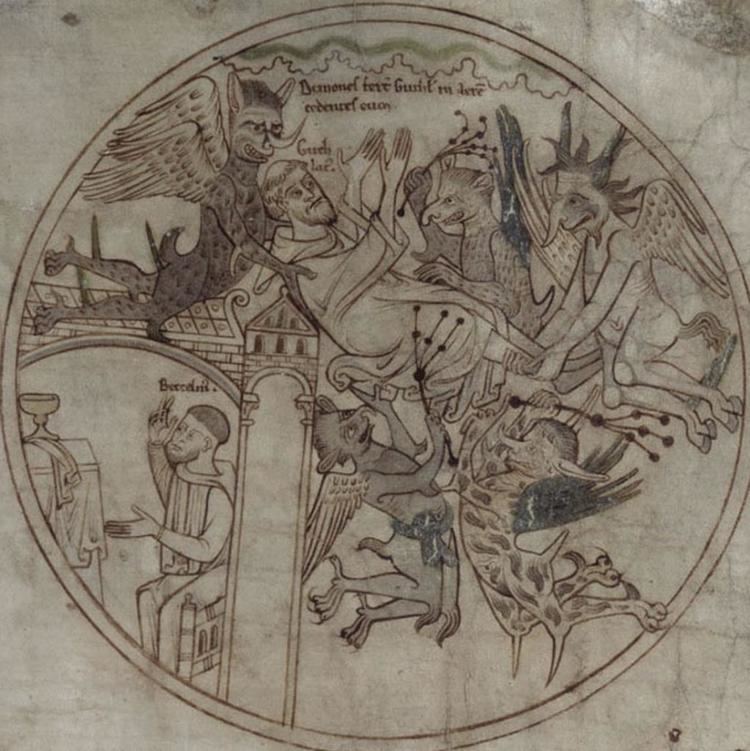
Guthlac built a small oratory and cells in the side of a plundered barrow on the island, and he lived there the rest of his life until his death on 11 April in AD 714. Felix, writing within living memory of Guthlac, described his eremitic life as follows:

Guthlac suffered from ague and marsh fever.
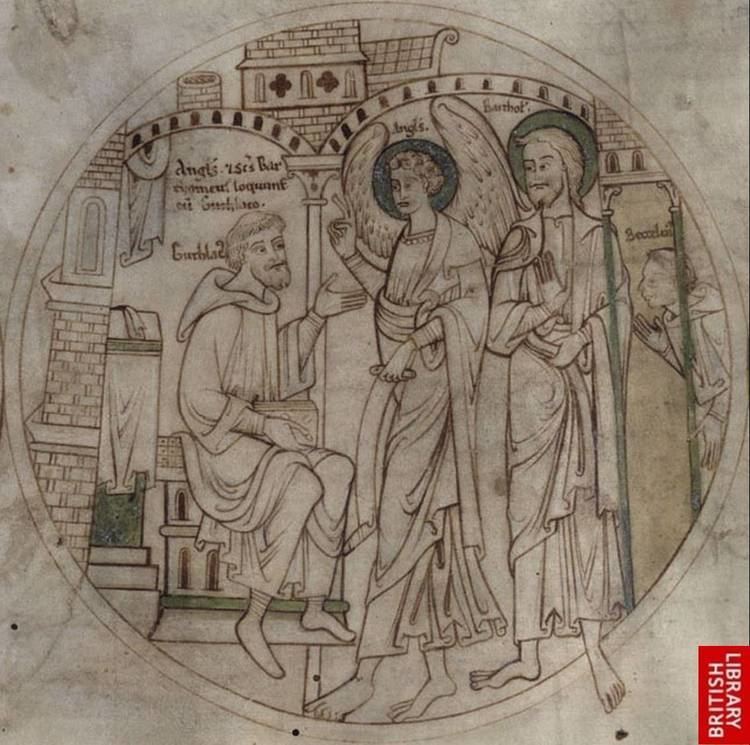
His pious and holy ascetic life became the talk of the land, and many people visited Guthlac during his life to seek spiritual guidance from him. He gave sanctuary to Æthelbald, future king of Mercia, who was fleeing from his cousin Ceolred. Guthlac predicted that Æthelbald would become king, and Æthelbald promised to build him an abbey if his prophecy became true. Æthelbald did become king and, even though Guthlac had died two years previously, kept his word and started construction of Crowland Abbey on St Bartholomew's Day 716 AD. Guthlac's feast day is celebrated on 11 April.
The 8th-century Latin Vita sancti Guthlaci is written by Felix, who describes the entry of the demons into Guthlac's cell as follows:
Felix records Guthlac's foreknowledge of his own death, conversing with angels in his last days. At the moment of death a sweet nectar-like odour emanated from his mouth, as his soul departed from his body in a beam of light while the angels sang. Guthlac had requested a lead coffin and linen winding sheet from Ecgburh, Abbess of Repton Abbey, so that his funeral rites could be performed by his sister Pega. Arriving the day after his death, she found the island of Crowland filled with the scent of ambrosia. She buried the body on the mound after three days of prayer. A year later Pega had a divine calling to move the tomb and relics to a nearby chapel: Guthlac's body was discovered incorrupt, his shroud shining with light. Subsequently Guthlac appeared in a miraculous vision to Æthelbald, prophesying he would be future King of Mercia. The cult of Guthlac continued amongst a monastic community at Crowland, with the eventual foundation of Crowland Abbey as a Benedictine Order in 971. Because of a series of fires at the abbey, few records survive from prior to the 12th century. It is known that in 1136 the remains of Guthlac were moved once more and that finally in 1196 his shrine was placed above the main altar.
A short Old English sermon (Vercelli XXIII) and a longer prose translation into Old English are both based on Felix's Vita. There are also two poems in Old English known as Guthlac A and Guthlac B, part of the tenth century Exeter Book, the oldest surviving collection of Anglo-Saxon poetry. The relationship of Guthlac A to Felix's Vita is debated, but Guthlac B is based on Felix's account of the saint's death.
The story of Saint Guthlac is told pictorially in the Guthlac Roll, a set of detailed illustrations of the early 13th century; it is kept in the British Library and copies are on display in Crowland Abbey.
Another account, also dating from after the Norman Conquest, was included in the Ecclesiastical History of Orderic Vitalis, which like the Guthlac Roll was commissioned by the abbot of Crowland Abbey. At a time when it was being challenged by the crown, the abbey relied significantly on the cult of Guthlac, which made it a place of pilgrimage and healing. That is reflected in a shift in the emphasis from the earlier accounts of Felix and others. The post-conquest accounts portray him as a defender of the church rather than a saintly ascetic; instead of dwelling in an ancient burial mound, they depict Guthlac overseeing the building of a brick and stone chapel on the site of the abbey.
The St Guthlac Fellowship
Formed in 1987, the St. Guthlac Fellowship is a group of churches which share a dedication to St Guthlac. The group comprises the following:
